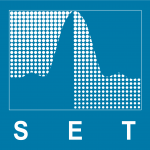|
I. COMMUNICATION NETWORKS AND SYSTEMS
· Networking: Cloud/Fog/Edge Computing; Networking and Storage; Networking for Big Data; Adhoc and Sensor Networks, Social Networks; Network Security; IoT and Applications; AI in Networking; Mobile & Wireless Networks; Next-Generation Networking & Internet; Paradigms & Applications; Network Softwarization; SDN/NFV; Network Slicing; Datacenter Networking; Network Optimization and Performance.
· Communication Systems: Modulation, Coding and Information Theory; Quantum Communications, Multimedia Communications, UWB; Ultrasonic and Underwater Communications; Satellite and Space Communications; Radio-over-Fiber, Visible Light, Free Space and Fiber-Optic Communications; Software Defined Radio, Cognitive Radio; Cooperative Communications, Communication and Information Systems Security, Massive MIMO; NOMA, 5G Systems, Millimeter-Wave Communications, Device-to-Device Communications, Green Communications, IRS, GNSS, UAV-aided Communications.
II. SIGNAL PROCESSING AND APPLICATIONS
· Signal Processing: Signal Filtering, Detection and Estimation, Statistical Signal Processing and Modeling; Signal and Image Encryption; Multimedia Privacy, Security and Forensics; Biomedical Signal Processing and Systems; Signal Processing Fundamentals & Applications; Signal Processing in Biomedical and Communications
· Multimedia Processing: Image/Video Processing, Analysis and Applications; Speech, Language, and Audio.
· Deep Learning and Machine Learning for Signal Processing: Machine Learning for Signal Processing; AI for Multimedia Understanding; Multimodal AI; Generative AI and LLM for Signal Processing; AI Foundations and Big Data for Signal Processing; Edge AI and Efficient ML; Human-AI Collaboration; Learned Data Coding and Processing
V. POWER ELECTRONICS
· Power Electronics Devices and Components.
· Power Converter Topologies.
· Converter Modelling, Design, and Control.
· Power Electronics Applications: Renewable energy, EVs, smart grids, industrial drives, Energy Storage and Power Management, wireless power transfer, biomedical power electronics, aerospace, and defense systems.
|
III. MICROWAVE ENGINEERING
· Microwave and Millimeter-Wave Devices and Components Design: Passive and Active Devices/Components, Integration Techniques, Nano-Scale Devices, Mm-Wave and THz Components.
· Antenna and Propagation: Compact Antennas, Reconfigurable and Smart Antennas, Beamforming, Massive MIMO Antennas, Phased Arrays, Measurements, Channel Modeling and Propagation, and Other related topics.
· EM Field Theory and Simulation Techniques: EM Theory, Modelling and Computational, Imaging, Metamaterials, Metasurfaces, Transparent Surfaces, Scattering and Diffraction, and Other EM-related topics.
· Microwave and Millimeter-Wave Systems and Applications: Sensing, Radar, Localization, Intelligent and Reconfigurable Surfaces, RFID, Wireless Power Transfer, Energy Harvesting, EMC/EMI, and Other related applications.
IV. ELECTRONIC SYSTEMS
· Digital, mixed-signal, analog/RF/mm-wave integrated circuits and systems.
· Emerging technologies, circuits and applications including IoT, autonomous vehicles, FPGA-based and embedded systems.
· EDA: System Design, Synthesis and Optimization; Formal Methods and Verification
· Architectures and Systems: NoC, Multi-Core, Video and Multimedia, Embedded Systems, Reconfigurable Computing, System-Level Power Management, IoT Devices, Hardware Security, High Performance/Parallel Computing Platforms for Big Data.
· Application Systems: Communication, Consumer and Multimedia; Medical and Healthcare; Spacecraft Avionics, Artificial Intelligence, Deep Learning.
SPECIAL SESSIONS
· TBD
Please visit https://www.TBD/category/special-sessions for more details.
|






